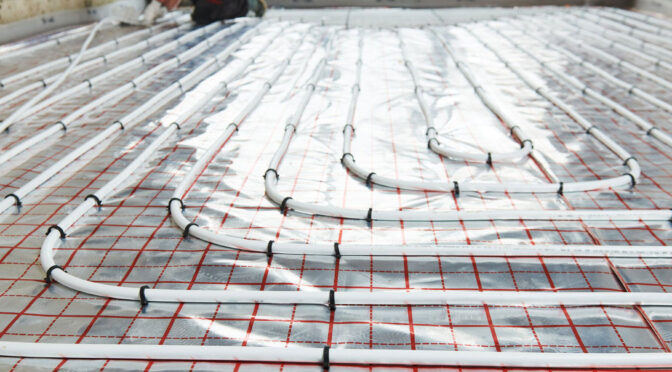But with this increase, comes the rise in demand for effective underfloor heating maintenance. Like any heating system, proper maintenance is crucial to ensuring optimal performance and longevity. Here are my 7-tips for keeping your system in good shape.
- 1) Check for leaks, and boiler pressureEvery now and again, inspect your underfloor heating system for leaks. Look for any signs of water damage, such as damp spots or discoloration on the flooring. Leaks can cause damage to the system and affect performance.
If you notice a drop in your boiler pressure, this can also be a sign that something in the system, or boiler, is leaking. If you do notice any leaks, contact a professional to assess and repair the issue promptly.
- 2) Maintain your thermostatMaintaining the thermostat is vital for optimal control of your underfloor heating system. Regularly check the batteries and replace if necessary. Clean the thermostat’s surface with a soft cloth to remove any dust or grime that may affect its accuracy. Ensure that the thermostat is calibrated correctly to maintain the desired temperature in your home.
If your thermostat happens to be wireless, don’t hide it behind and bookshelves or drawers.
The thermostat works by picking up ambient temperature, therefore it needs to be in a well-ventilated part of the room, away from direct sunlight. - 3) Get an annual system check-upSchedule an annual check-up with a qualified heating engineer to inspect and service your underfloor heating system. They will perform a thorough examination, test the components, and identify any potential issues.
Your central heating could also require a power flush, so it’s worth getting that inspected annually, too.
- 4) Don’t obstruct the heat flowAvoid obstructing the heat flow. Arrange furniture and rugs in a way that allows heat to circulate freely.
Blocking the vents or placing heavy objects on the floor can reduce the system’s effectiveness and lead to uneven heating.
- 5) Monitor your pressure and flowMonitor the pressure and flow of your underfloor heating system. If you notice a decrease in heat output or uneven heating, it could be a sign of pressure or flow issues.
Consult the system’s manual or contact a professional to adjust the pressure or balance the flow of water within the system.
- 6) Bleeding the systemBleeding the underfloor heating system is necessary to remove any air pockets that may hinder proper operation. Follow the manufacturer’s guidelines to release air trapped in the system.
Regularly bleeding the system ensures efficient heat distribution and prevents potential damage. However, this is not as simple as bleeding a radiator, it requires professional intervention.
- 7) Educate yourselfTake the time to educate yourself about your specific underfloor heating system. Read the manufacturer’s manual and understand the recommended maintenance procedures. Being knowledgeable about your system allows you to identify potential problems and take appropriate action promptly.


